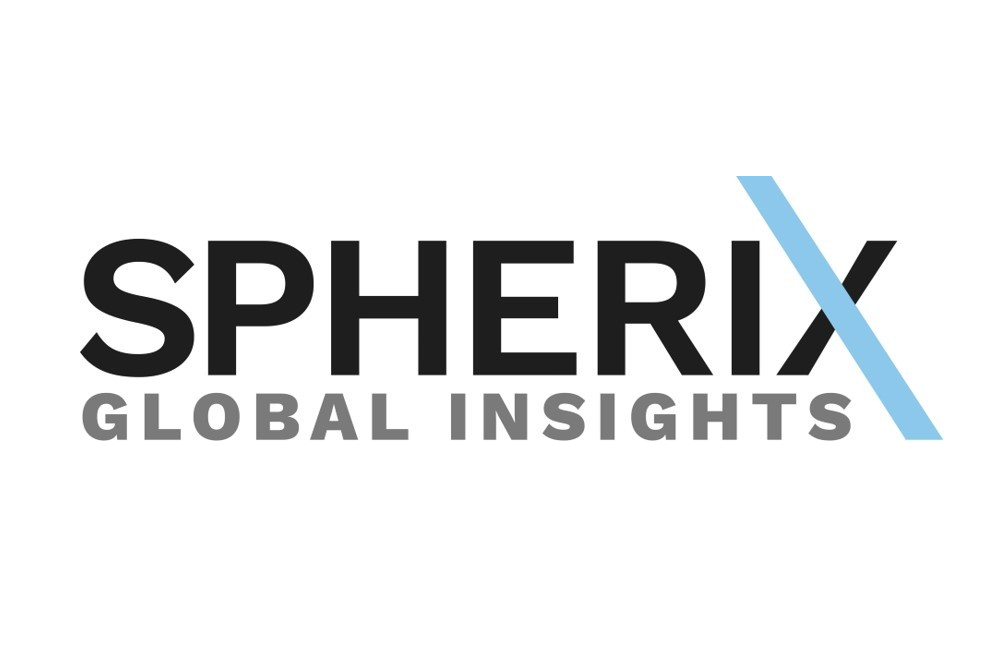
Impel's new entrant into the acute migraine landscape, the dihydroergotamine mesylate (DHE) nasal spray, Trudhesa, is off to a somewhat light start. However, the brand shows promise for future acceleration across launch metrics.
The first of six quarterly deep dive reports included in Spherix's Launch Dynamix™: Trudhesa (Impel) in Acute Migraine (US) service collected the responses of 79 U.S. neurologists and migraine specialists three months post launch. Analysis of time-aligned launch benchmarks reveal that awareness (unaided) and familiarity with Trudhesa currently falls behind that of AbbVie's Ubrelvy and Biohaven's Nurtec ODT (for acute migraine), but is fairly comparable to Eli Lilly's ditan, Reyvow.
While physicians' self-reported share of Trudhesa is not particularly strong at this early juncture, respondents estimate a rapid increase in the next six months – surpassing use of all other ergot therapies combined.
Prescribers indicated "efficacy" as the top initiation driver for Trudhesa, which may be related (in part) to the agent's upper nasal space delivery. Survey data show that the majority of physicians believe that the upper (rather than the lower) nasal space is better for achieving higher bioavailability.
Qualitative feedback supports that the delivery placement is an important feature of the brand, as one physician notes, "The medication goes all the way up to your upper nasal passages and supposedly that improves the pharmacokinetics. Therefore, it shows very good efficacy."
Prior experience with DHE may also be influencing perceptions of Trudhesa's effectiveness; almost all surveyed physicians report having previously used DHE as an acute treatment for migraine among their patients. Several interviewed physicians pointed out that their familiarity with DHE influences their positive views regarding Trudhesa's efficacy.
However, DHE experience has the potential to be a double-edged sword, given that positive efficacy perceptions may be paired with safety concerns. One physician mentions, "DHE 45, that we used to use intravenously, was well tolerated for most patients…very effective. But the risks of using it in patients that had arteriosclerosis, current heart disease, liver disease was always an issue, was always a difficulty."
Following efficacy expectations, disease severity also drives the decision to prescribe Trudhesa, as the brand is typically reserved for patients with severe migraine disease as a third- or later-line treatment. For the foreseeable future, DHE-associated safety concerns will likely keep Trudhesa niched as an option for refractory patients who frequently suffer intractable migraine attacks.
Indeed, safety concerns are a common primary barrier to Trudhesa initial trial or even greater uptake among those early adopters – second only to the standard lack of familiarity barrier (seen with most launches). Unaided, these concerns are primarily related to cardiovascular risks and contraindication for use with vasoconstrictors. Spherix data indicate that almost all physicians are at least moderately worried about the potential for adverse events if Trudhesa is dosed with 24 hours of a triptan.
While there are alternative DHE agents available (i.e., Bausch's Migranal), the gepants and Reyvow are most likely to be considered Trudhesa's major competitors. Indeed, Nurtec ODT, Ubrelvy, or Reyvow together were five times more likely than Migranal or any other DHE formulation to be selected as the most likely alternative therapy if Trudhesa had not been available. The gepants were reportedly discussed as viable options during more than half of brand selection discussion prior to Trudhesa prescriptions.
Brand comparisons show that Nurtec ODT outperforms Trudhesa on safety, tolerability, and dosing profile. As one physician states, "Trudhesa, you have to prime it 4 times, and then inject to both nasal passages. On Nurtec, you'd be driving down the road, put in your mouth, dissolves, you're done."
Compared to Migranal, a nasal spray that delivers DHE to the lower nasal space, Trudhesa was ahead on most assessed metrics, with particularly competitive performance on higher bioavailability and preferred device. One physician touted that Trudhesa has a much more "controlled" and "sophisticated" delivery system, likely reflecting Impel's proprietary Precision Olfactory Delivery (POD®) technology.
Spherix will continue to assess Trudhesa perceptions and related prescribing patterns via their ongoing Launch Dynamix™ and RealTime Dynamix™ services.
About Launch Dynamix™
Launch Dynamix™ is an independent service providing a monthly benchmarking of newly launched products for the first eighteen months of commercial availability, augmented by a quarterly deep dive into patient types initiated, brand perceptions, promotional activity, and drivers and barriers to uptake.
About RealTime Dynamix™
RealTime Dynamix™ is an independent service providing strategic guidance through quarterly or semiannual reports, which include market trending and a fresh infusion of event-driven and variable content with each wave. The reports provide an unbiased view of the competitive landscape within rapidly evolving specialty markets, fueled by robust HCP primary research and our in-house team of experts.
Learn more about our services here.
About Spherix Global Insights
Spherix Global Insights is a hyper-focused market intelligence firm that leverages our own independent data and expertise to provide strategic guidance, so biopharma stakeholders make decisions with confidence. We specialize in select immunology, nephrology, and neurology markets.
All company, brand or product names in this document are trademarks of their respective holders.
For more information, contact:
Virginia Schobel, Neurology Franchise Head
info@spherixglobalinsights.com
www.spherixglobalinsights.com